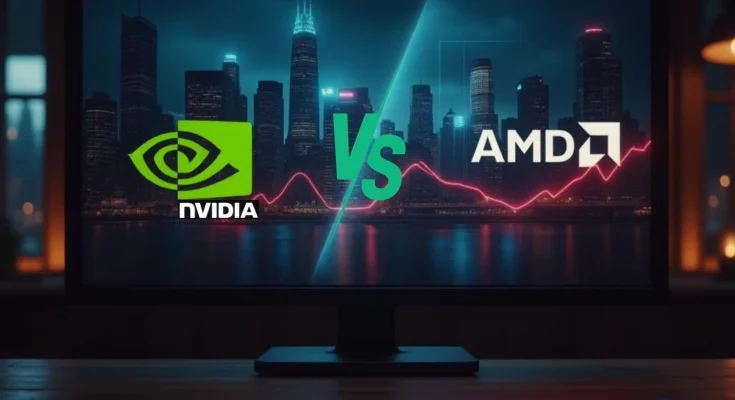AMD vs Nvidia: The rivalry between these two tech giants has continued to heat up, especially in the rapidly evolving landscape of artificial intelligence (AI).
A Brief Overview of AMD and Nvidia
Both companies have played a significant role in the progression of computational technology, but their trajectories have differed greatly. AMD, which once floundered on the brink of bankruptcy, has shown remarkable growth under the leadership of Lisa Su. Meanwhile, Nvidia has dominated the AI space with its cutting-edge GPUs and AI technologies.
AMD’s Resurgence
- In 2014, AMD was nearly insolvent, struggling financially through a long period of losses.
- The introduction of the Zen architecture marked a turning point, allowing AMD to formulate a competitive edge against Intel.
- By 2021, AMD achieved a 39.4% market share in the CPU server segment.
Nvidia’s Unyielding Dominance
On the other hand, Nvidia has solidified its reputation as a leader in GPU technology, primarily through:
- Innovative CUDA cores for parallel processing.
- Developing Tensor cores tailored for AI training.
- A significant growth in compute power that has outstripped the traditional limits of Moore’s Law.
Understanding AI Training and Inference
It’s essential to distinguish between two core aspects of AI: training and inference.
- Training: This involves teaching a model to recognize patterns in labeled data, which is very resource-intensive.
- Inference: In contrast, this is the phase where the model predicts based on previously learned data, requiring lower latency but still significant computational resources.
AMD’s Positioning in Inference
While Nvidia leads in training, AMD has strengths in inference, making its MI350 series GPUs an appealing option:
- AMD’s MI350X is designed to maximize performance per dollar spent.
- Intel’s high costs and AMD’s innovative designs may position AMD favorably for market capture during the inference stage.
Will AMD Dominate Nvidia by 2028?
The short answer remains unclear; however, analysts suggest the following possibilities:
- If AMD can successfully market and execute its upcoming companies’ GPUs, they stand a chance at gaining notable ground.
- The current market trend favors cost efficiency, which plays to AMD’s strengths.
As we look ahead to 2028, the competition will intensify. AMD might finally shake off its underdog status and position itself as a viable alternative to Nvidia in the AI space. Whether AMD can truly surpass Nvidia will depend on continued innovation, proper execution, and perhaps a favorable market environment.
Investors should remain vigilant and informed, as this clash of the tech titans transforms the landscape of AI technology and investment opportunities.

